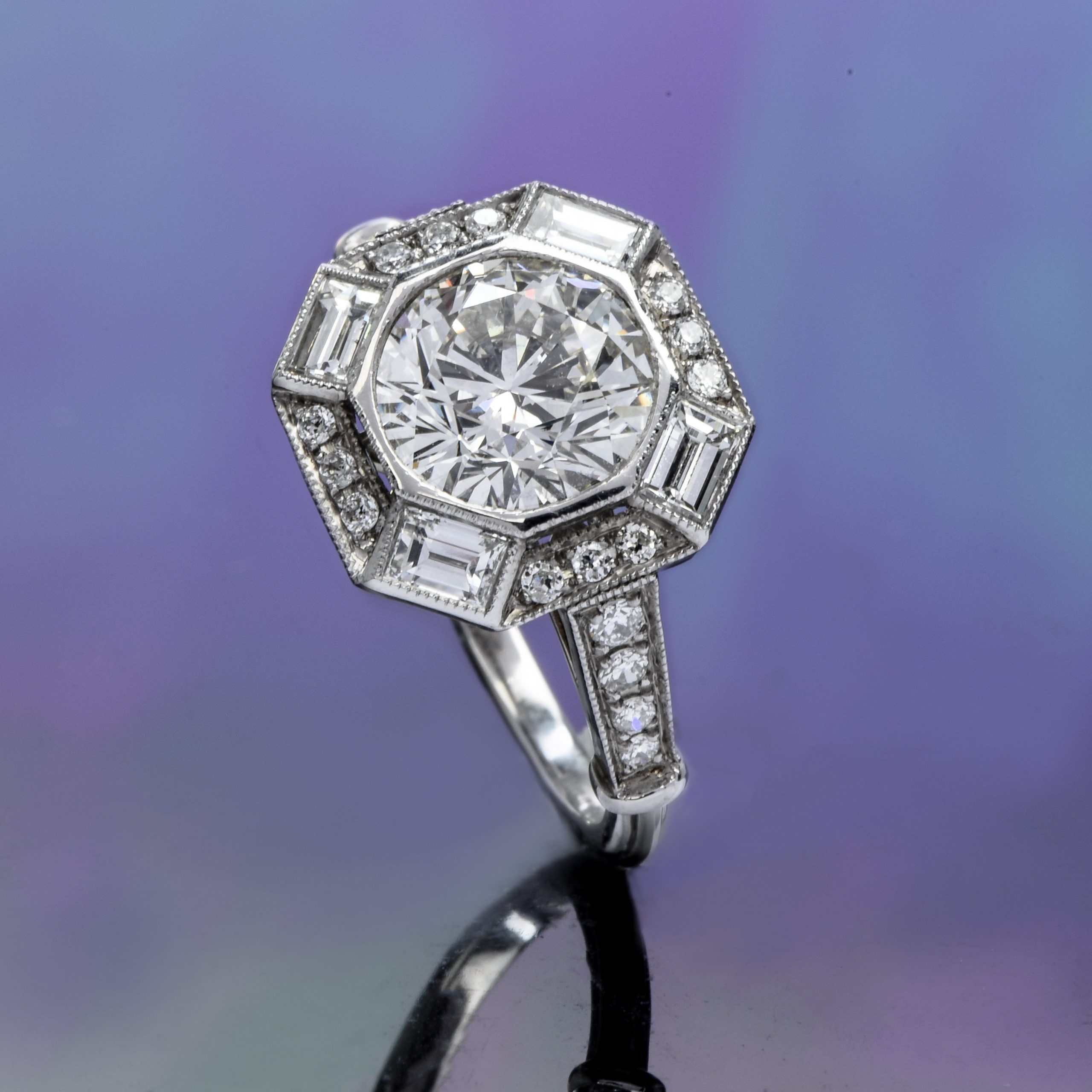
Is Your Diamond Fake?
Is it CZ, A Simulant or Lab Grown?
It’s time to ask some tough questions. What if your diamond isn’t real? How can you tell the difference between a fake and the real thing?
Buying a diamond is a major decision – particularly if it is a Diamond Engagement Ring. Beyond making sure you are getting your money’s worth, the gift of a diamond to a loved one is an important mark of your feelings for them. If you have been cheated, it will be both a disappointment and an embarrassment to you and the recipient.
You need to be 100% confident that your diamond is real.
There are several diamond substitutes and simulations on the market. Some of these have value, whilst others are completely worthless.
Here are some basic differences between real and fake diamonds:
· Real diamonds are much heavier and have a higher density than most fake ones, although cubic zirconia (CZ) is heavier than diamond, strangely enough.
· Real diamonds are mined and are made of carbon, fake ones are glass and silicon.
· Real diamonds refract light more than fake ones; images seen through diamonds are obscured but fake diamonds look clearer and more transparent.
· Real diamonds have sharp edges. Fake ones have rounded edges.
· Real diamonds have imperfections or inclusions; fake ones have none.
· Real diamonds emit a blue glow in ultraviolet light; fake diamonds emit a yellow glow.
· Real diamonds are less sparkly; fake ones look like high-end glass.
If you are suspicious about the authenticity of your diamond, the best thing is to have it examined by a professional jeweler, who can look at it under a loupe.
There are some home tests you can do:
- Does It Sparkle Unnaturally? Natural diamonds have a greyish sparkle to them. Fake stones such as cubic zirconia emit a highly colored, rainbow sparkle. They look fake.
- Does It Scratch Easily? Rub the stone with the gritty side of a piece of sandpaper. A diamond is one of the hardest substances in the world, so if it is real, it will not scratch. A fake diamond will!
- Can You Read Through It? Try and read a newspaper through the diamond. If it is real, you won’t be able to read a word. A fake diamond will let you read the words.
- Does It Sink in Water? This is a test for a loose stone only. Fill a glass with water and drop the stone to the bottom of the glass. If it sinks, it is real. If it floats on the top or near the surface of the water, it is a fake.
- Does It Fog Up? Breathe on the stone and see if it fogs up. If it does, and the fog goes away immediately, it is likely a real diamond. If it takes several seconds to clear, it is probably fake. Diamonds quickly disperse the heat from your breath.
- Can You See the Dot? Draw a dot on a piece of white paper. Put the stone onto the dot, flat side down. If you can see the dot through the pointed end of the stone, it is fake. If the dot is not visible, the stone is real. This is because a real diamond refracts light in different directions instead of in a straight line.
Here are a few tips on recognizing diamond simulants:
- Cubic Zirconia has a highly colored, iridescent sparkle that looks fake. It has no inclusions and is heavier than a real diamond.
- White Sapphires have blurred coloring with no distinctive dark and light areas.
- Moissanite is more difficult to recognize. You’ll need a professional to conduct an electrical conductivity test.
- White Topaz has a softer exterior than diamond, so it will scratch easily.
Lab-Grown Vs Natural Diamonds?
Is your diamond lab-grown? If so, it should have been sold to you as such. Lab-grown diamonds are man-made in a laboratory and are far cheaper than the real thing.
- Lab-Grown or Synthetic diamonds may look like the real thing – and in many ways they are. They have the same molecular structure and can be cut into the same shapes as natural diamonds, but a professional jeweler can tell immediately that they are manufactured. A lab-grown diamond does not retain its value. In fact, you may not be able to sell it for what you originally paid.
- Natural diamonds are finite, rare and unique. No two diamonds are the same. Their rarity has made them a source of wealth for centuries, and it will continue to do so as supplies diminish.
The best way to avoid the nagging feeling that you may have been cheated is to be very careful about WHERE you buy your diamond in the first place. It is important to purchase from a reputable jeweler offering third-party verified diamonds, which have been evaluated for their
4Cs of quality – color, cut, clarity and carat weight by the Gemological Institute of America (GIA) or the American Gem Society (AGS), for example.
If you are not sure if your diamond is real, let Dover’s professional team give you an appraisal. We have an unrivaled 25+ year reputation, an A+ BBB review and thousands of satisfied clients who trust us with their heirlooms. Contact Us for your evaluation.
We’ll verify your stone’s authenticity and give you its fair market value


